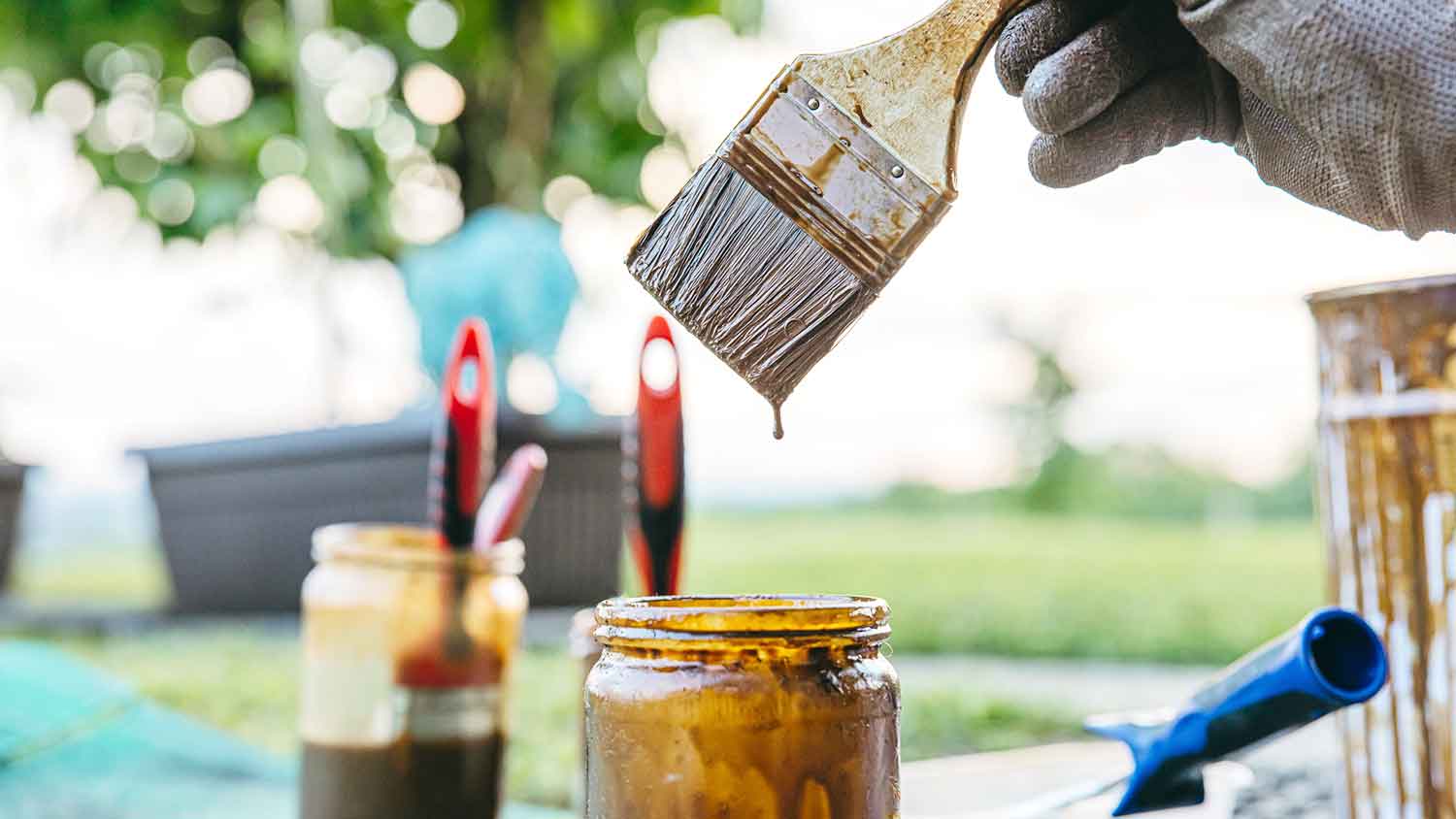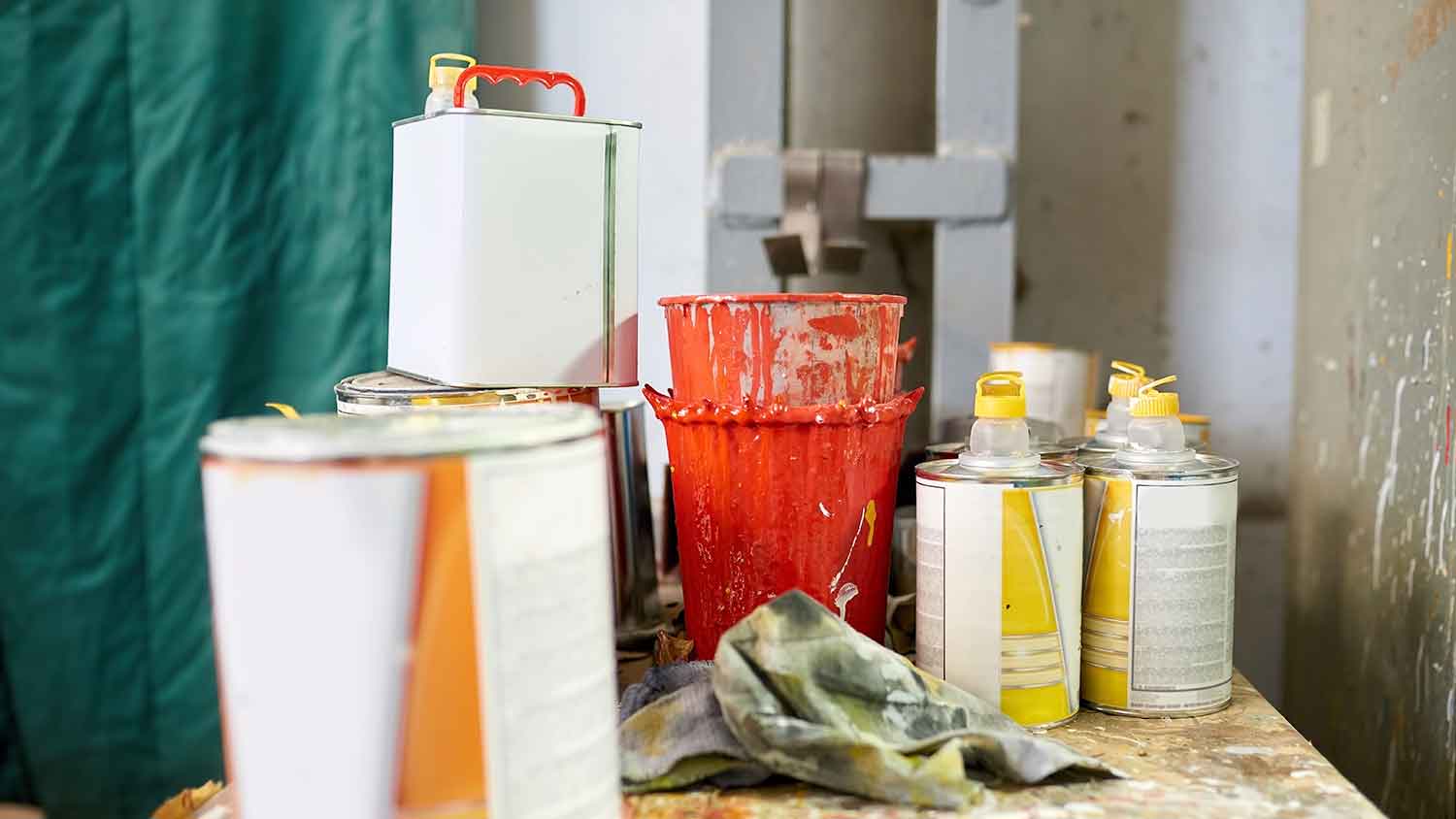
The cost to paint the interior of a house in Indianapolis, IN depends on size, layout, type of surface, and more. Learn what factors can influence your total in this guide.
These two are friends, but not besties


Paint thinner thins oil-based paints, stains, and varnishes.
Lacquer thinner cleans up and removes lacquers.
Lacquer thinner is more expensive than paint thinner.
Both products are considered hazardous.
If you’re in dire need of some diluted paint, stain, or lacquer to make it easier to apply, you’ve likely been eyeing some thinning liquids. Two of the most popular options are paint thinner and lacquer thinner. Despite sharing many properties, these compounds address different needs. Here are the major differences between these two thinning agents so you can make the correct choice for your project.
Paint thinner and lacquer thinner boast similar application methods but different use case scenarios, just like when comparing paint versus stain. Here are the key differences.
| Feature | Paint Thinner | Lacquer Thinner |
|---|---|---|
| Uses | Diluting paint | Removing lacquer |
| Price | $15–$20 per gallon | $20–$70 per gallon |
| Safety | More VOCs | More flammable |
| Speed of use | Slower | Faster |
| Disposal method | Exercise caution | Exercise caution |

These two are not interchangeable. Paint thinner isn’t designed to dissolve lacquers and lacquer thinner isn’t designed to dilute paint or solvent.
Lacquer thinner primarily cleans up and removes lacquers from certain surface types. It’s also useful to improve the viscosity of thicker-than-average lacquers. Beyond that, homeowners use this substance to clean tools like paint sprayers and to clean off heavy-duty inks and adhesives.
Paint thinner thins out oil-based paints, varnishes, and stains to make them less viscous and easier to apply. People also use paint thinner to clean brushes, wipe off oily surfaces, and clean paint sprayers' hoses and internal workings. It’s not made to remove dried and cured paint. For that, use a liquid paint remover or paint stripper.
Lacquer thinner is much more expensive than paint thinner. The former costs anywhere from $20 to $70 per gallon, while the latter comes in at $15 to $20 per gallon. Luckily, most relevant jobs require just a bit of this substance.
Paint thinner is a generic term that usually refers to petroleum-based products like mineral spirits. However, there are eco-friendly paint thinners made from citrus, soy, and pine. The vast majority of paint thinners are clear, with an ingredient list consisting of mineral spirits and benzene.
Lacquer thinner is more of a hodgepodge, boasting a lengthy ingredient list. Depending on the exact formulation, there’s methanol, ethyl acetate, hydrotreated light distillate, and more. This stuff is pretty powerful.
Both substances are hazardous, so wear the appropriate safety gear throughout the project, including chemical-resistant goggles, gloves, and breathing protection. Only work with these products in well-ventilated areas. When in doubt, contact a local interior painting pro.
Paint thinner emits more volatile organic compounds (VOCs) during use, and lacquer thinner is more flammable. Both are flammable, though, so keep them away from open flames. Finally, keep lacquer thinner away from plastic and rubber, as it’ll cause serious damage.

Both products are considered hazardous waste materials. This means you should take safety precautions during use, as mentioned above, and when disposing of leftover paint and lacquer thinners.
Do not pour them down the drain under any circumstances. This will contaminate the local environment and wreak havoc on your pipes. You should also be careful with rags and other items that were immersed in thinner. Contact a local hazardous waste collection center and inquire about a drop-off instead of popping those rags in the trash.
From average costs to expert advice, get all the answers you need to get your job done.

The cost to paint the interior of a house in Indianapolis, IN depends on size, layout, type of surface, and more. Learn what factors can influence your total in this guide.

The cost to paint the interior of a house in Houston, TX depends on size, layout, type of surface, and more. Learn what factors can influence your total in this guide.

The cost to paint the interior of a house in Detroit, MI depends on size, layout, type of surface, and more. Learn what factors can influence your total in this guide.

Have an old piece of wood furniture that desperately needs a refresh? Learn how to paint over stained wood and if this is a DIY project well-suited for you.

Knowing how to paint stair railings is a useful trick in your DIY bag. Here are the simple steps necessary to achieve a professional-looking job.

Are you asking yourself, “What is limewash paint?” Learn more about this timeless paint, sometimes called whitewash, before using it in your next project.